Abstract
OBJECTIVE. We evaluate whether patient outcomes may be affected by possible errors in care at discharge as assessed by Peer Review Organizations (PROs). DATA SOURCES/STUDY SETTING. The three data sources for the study were (1) the generic screen results of a 3 percent random sample of Medicare beneficiaries age 65 years or older who were admitted to California hospitals between 1 July 1987 and 30 June 1988 (n = 20,136 patients); (2) the 1987 and 1988 California Medicare Provided Analysis and Review (MEDPAR) data files; and (3) the American Hospital Association (AHA) 1988 Annual Survey of Hospitals. STUDY DESIGN. Multivariate logistic regression analysis was used to evaluate the association between the results of generic discharge administered by the PROs and two patient outcomes: mortality and readmission within 30 days. The analysis was adjusted for other patient characteristics recorded on the uniform discharge abstract. PRINCIPAL FINDINGS. Four discharge screens indicated an increased risk of an adverse outcome-absence of documentation of discharge planning, elevated temperature, abnormal pulse, and unaddressed abnormal test results at discharge. The other three discharge screens examined-abnormal blood pressure, IV fluids or drugs, and wound drainage before discharge-were unrelated to postdischarge adverse outcomes. CONCLUSIONS. Generic discharge screens based on inadequate discharge planning, abnormal pulse, increased temperature, or unaddressed abnormal tests may be important indicators of substandard care. Other discharge screens apparently do not detect errors in care associated with major consequences for patients.
Full text
PDF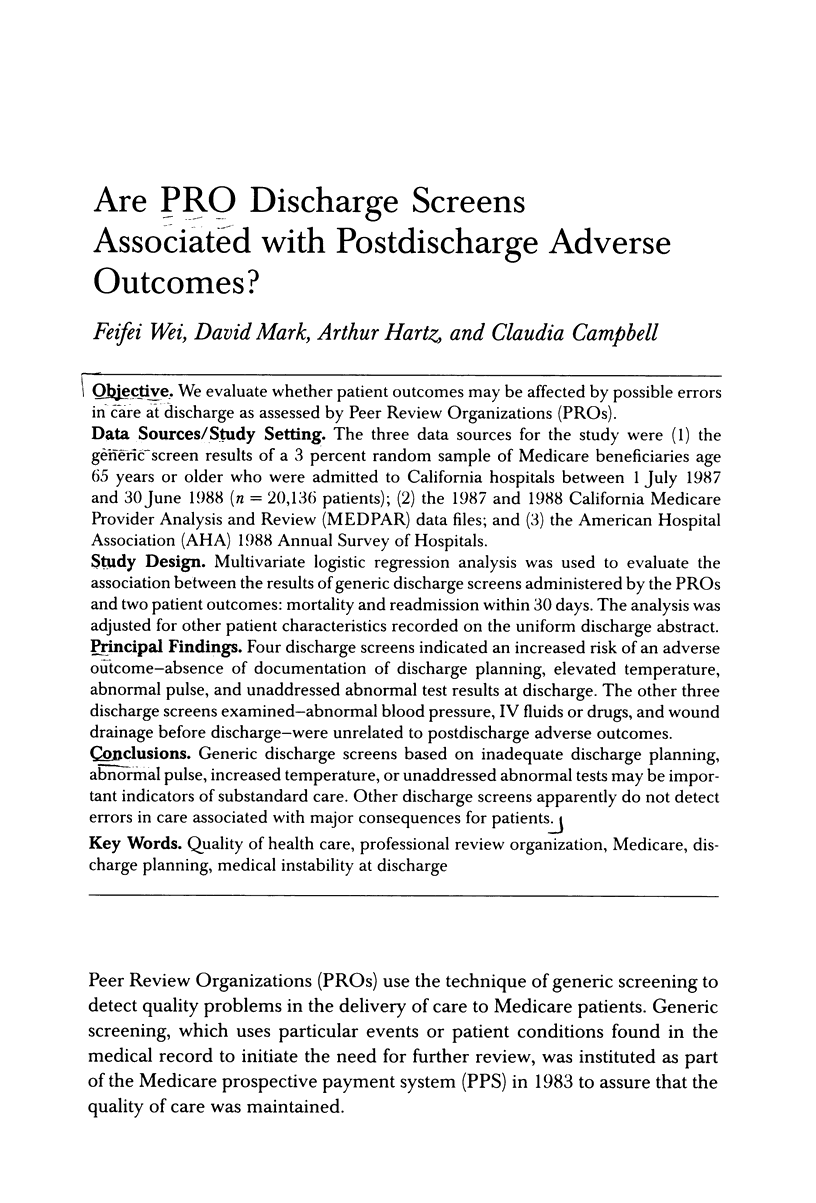
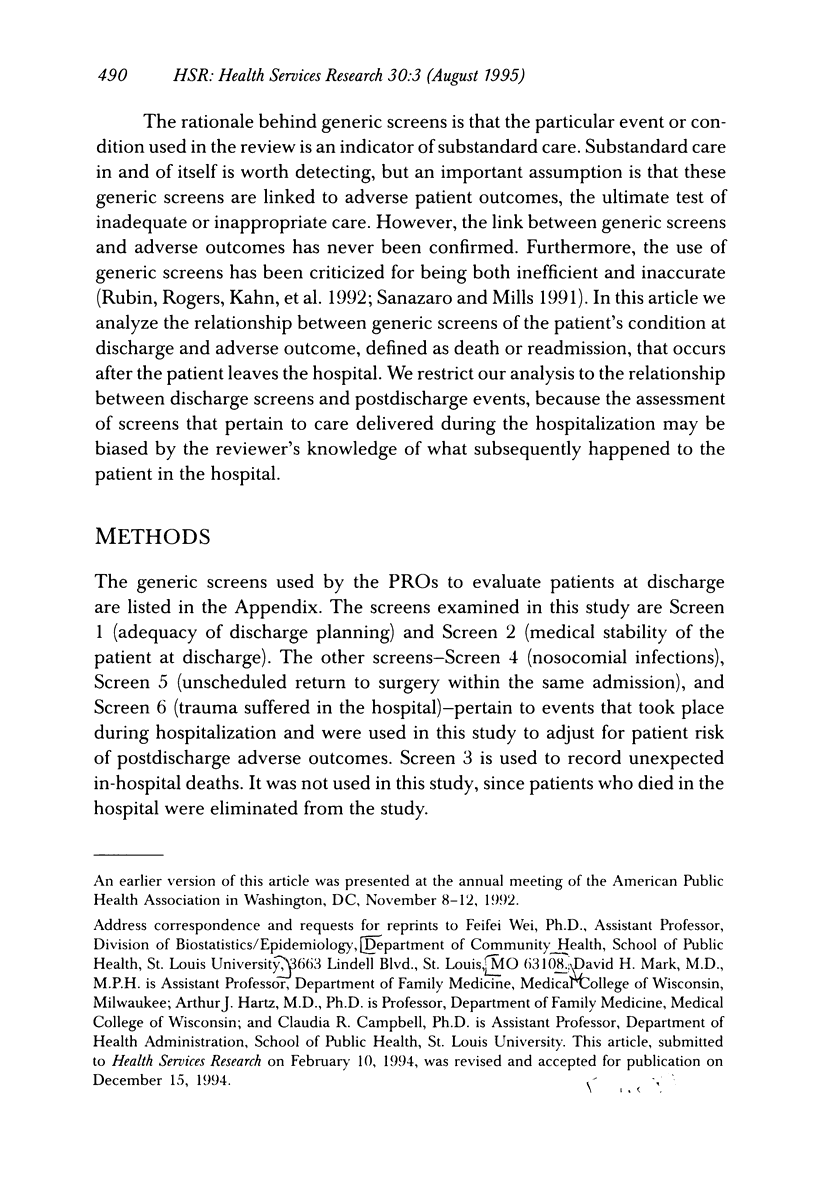
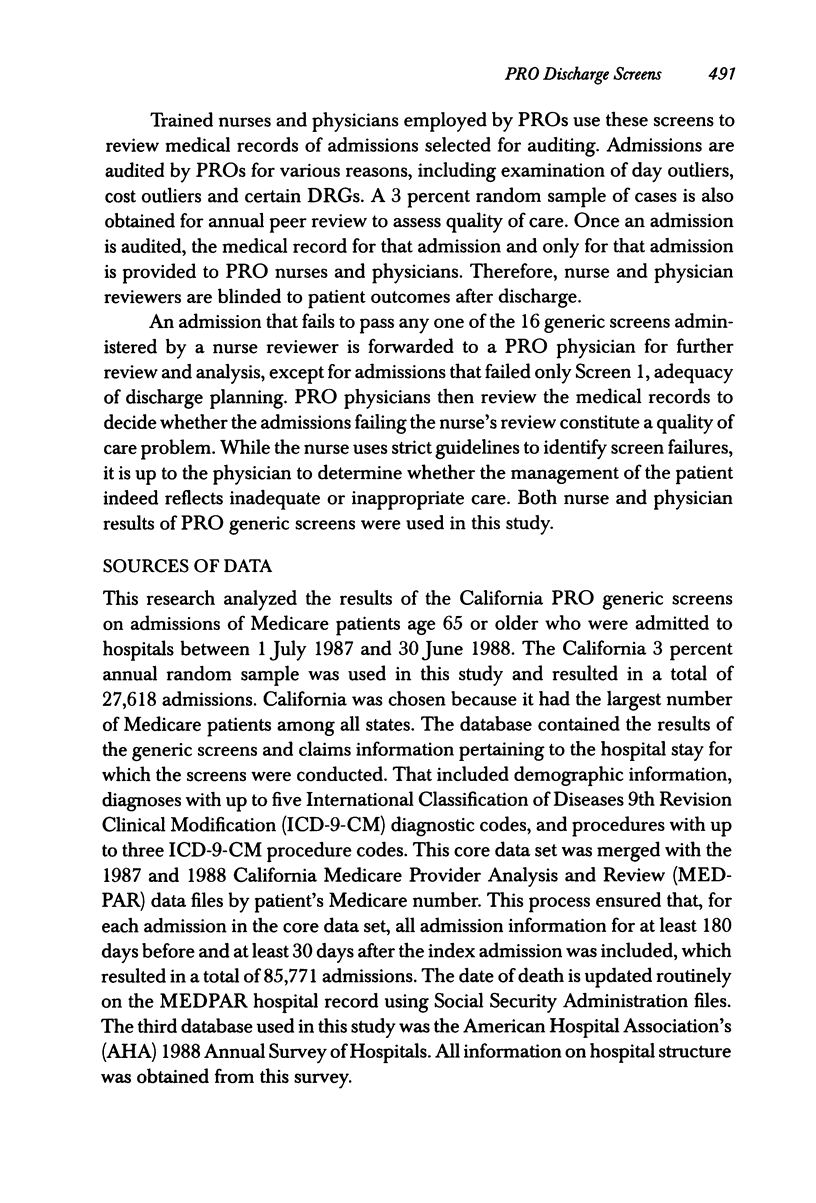
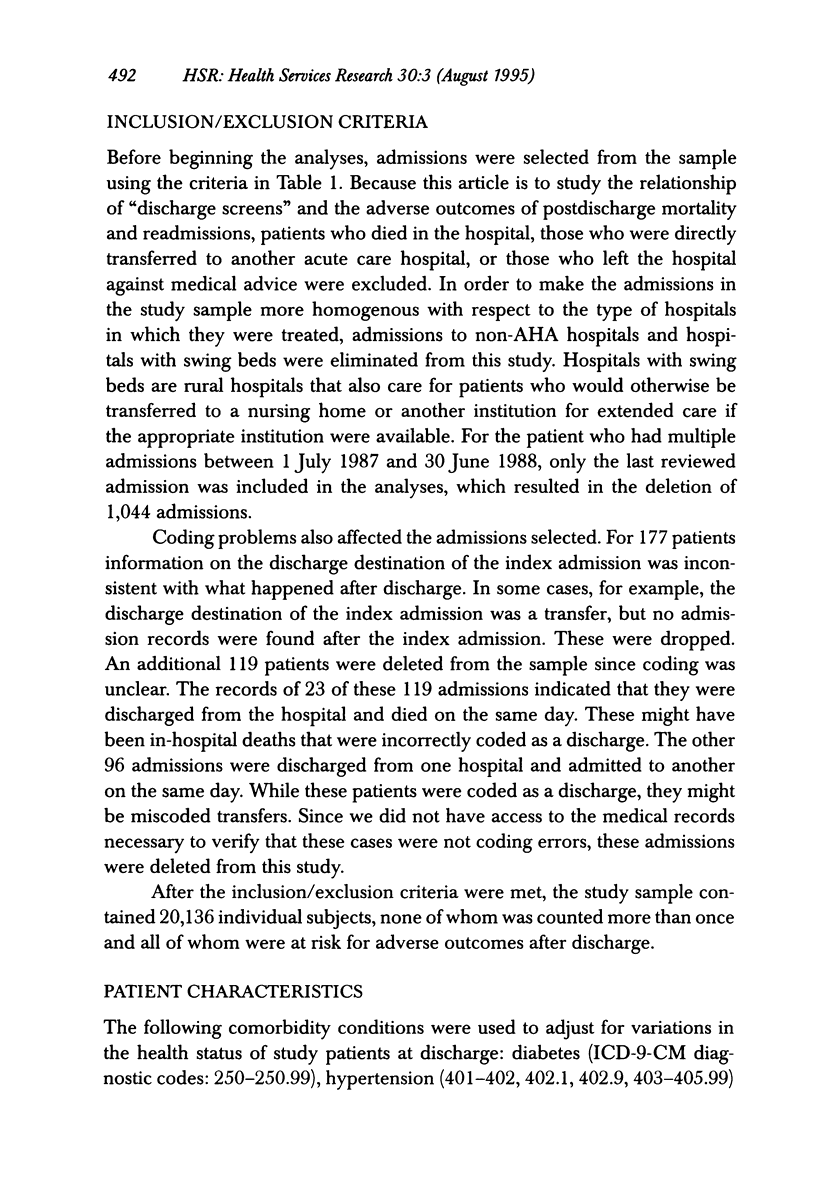
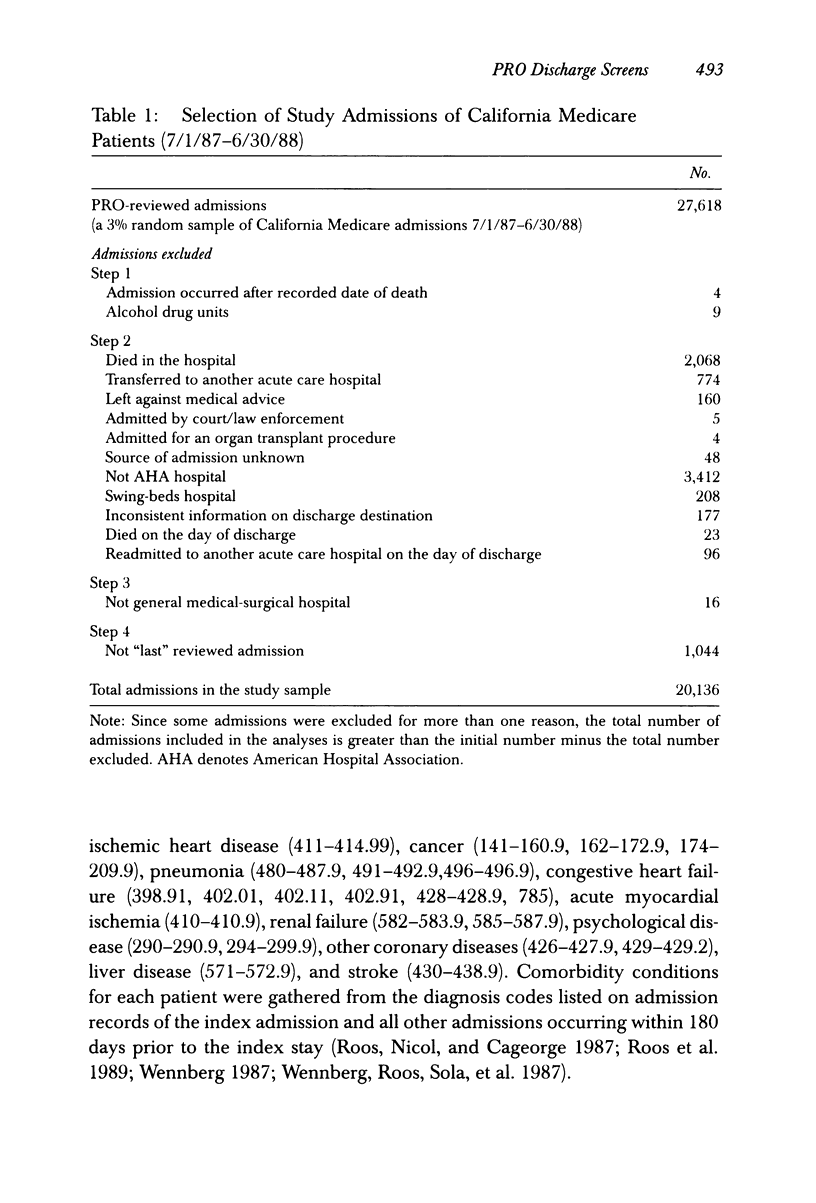
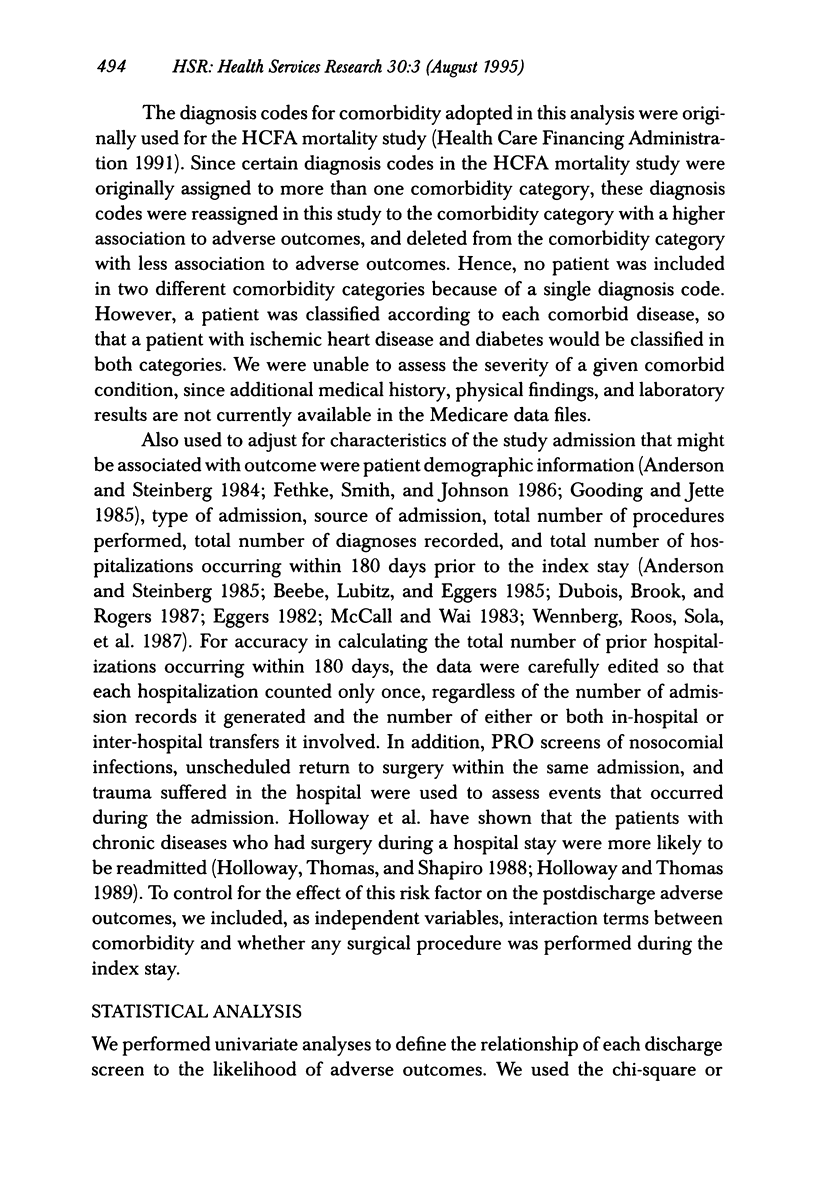
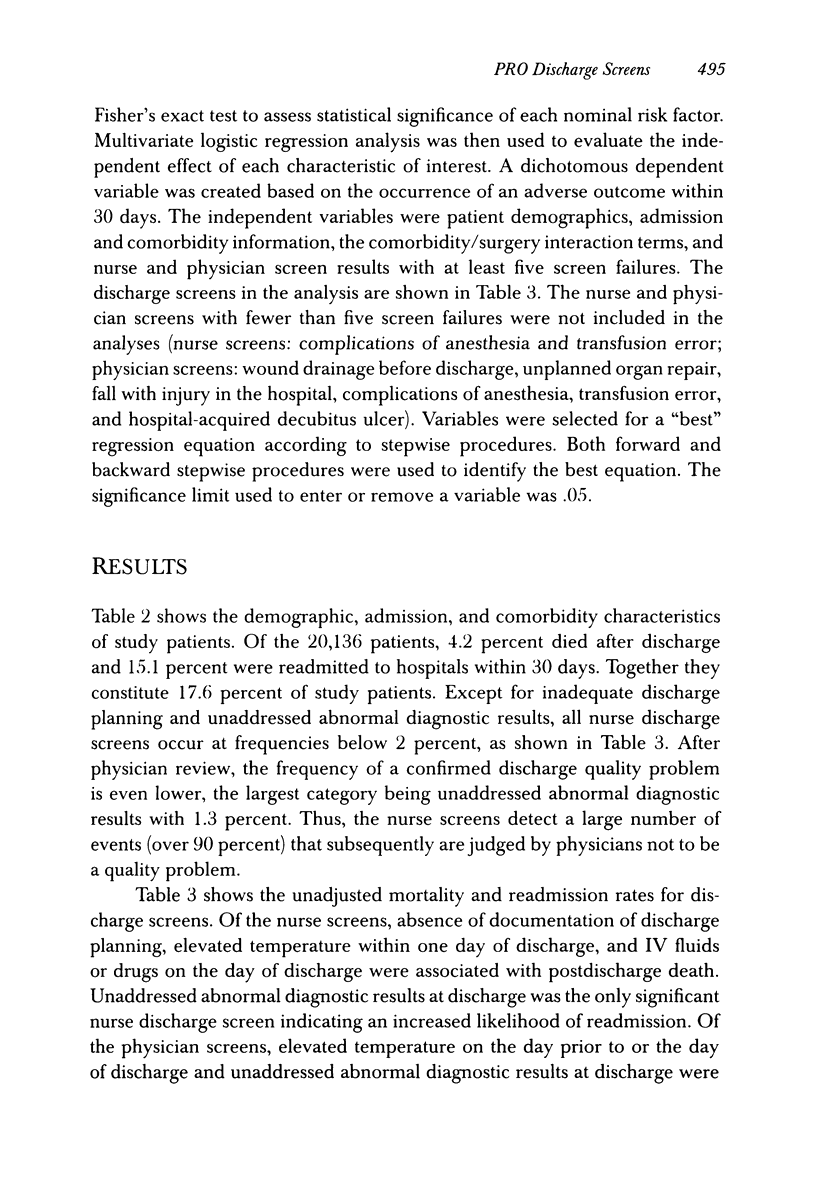
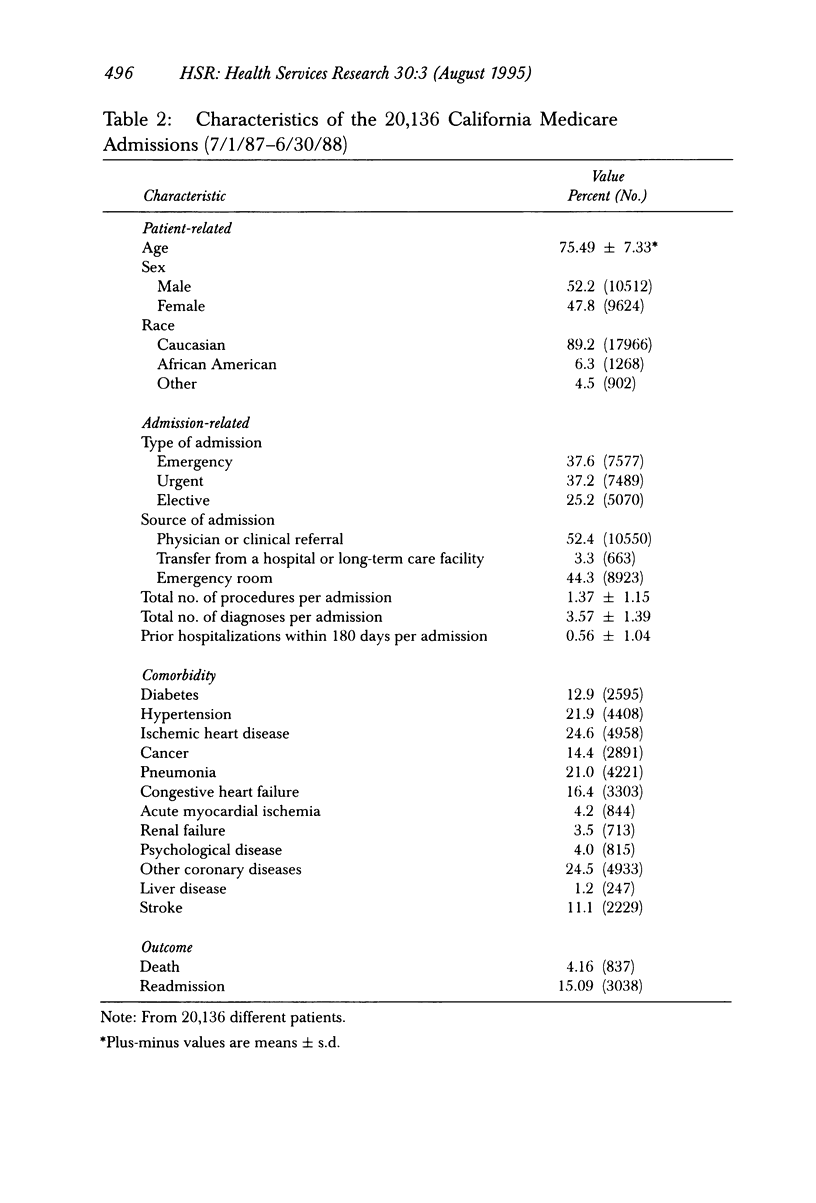
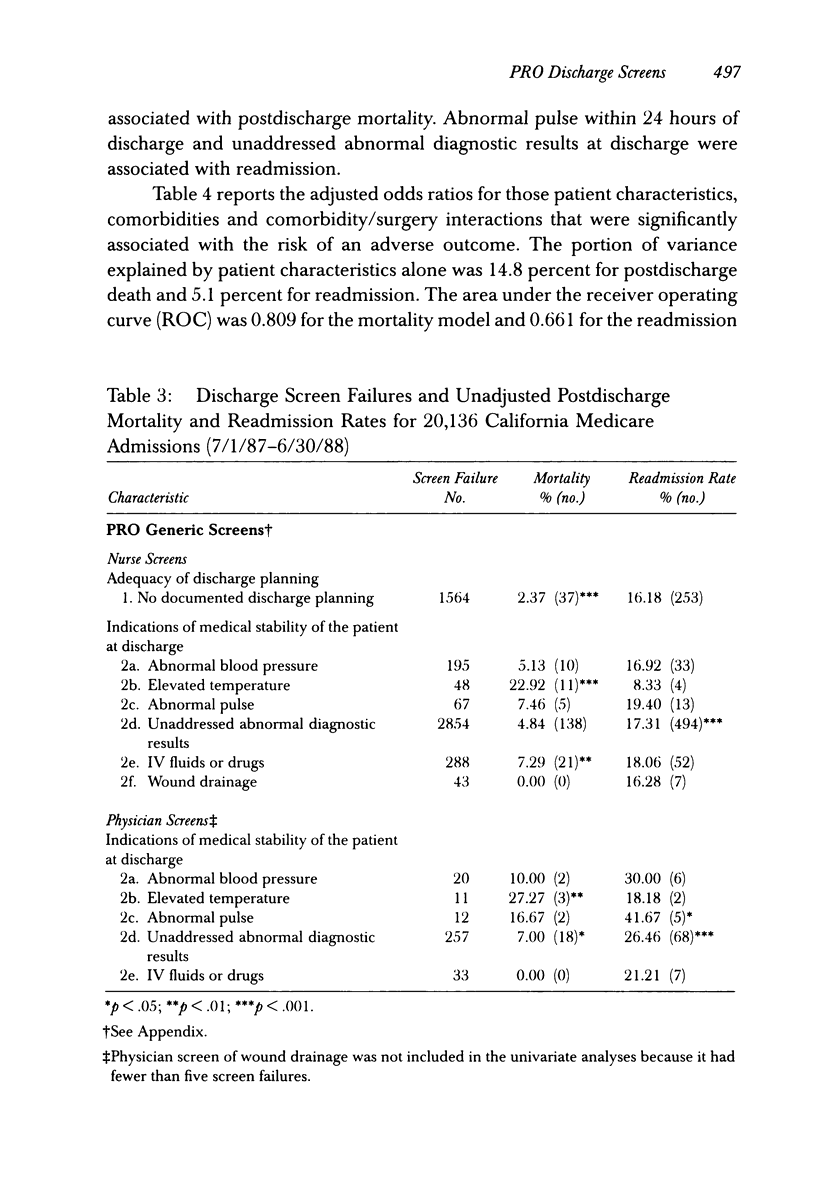
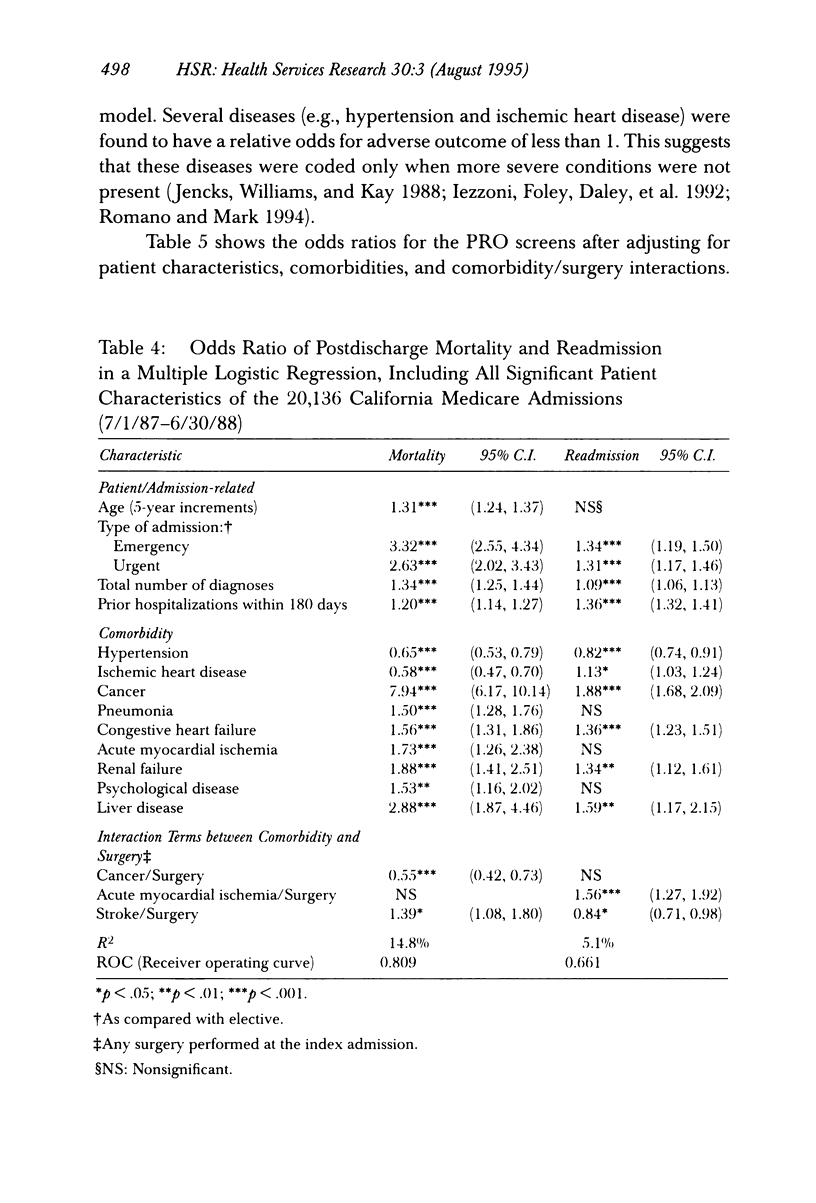
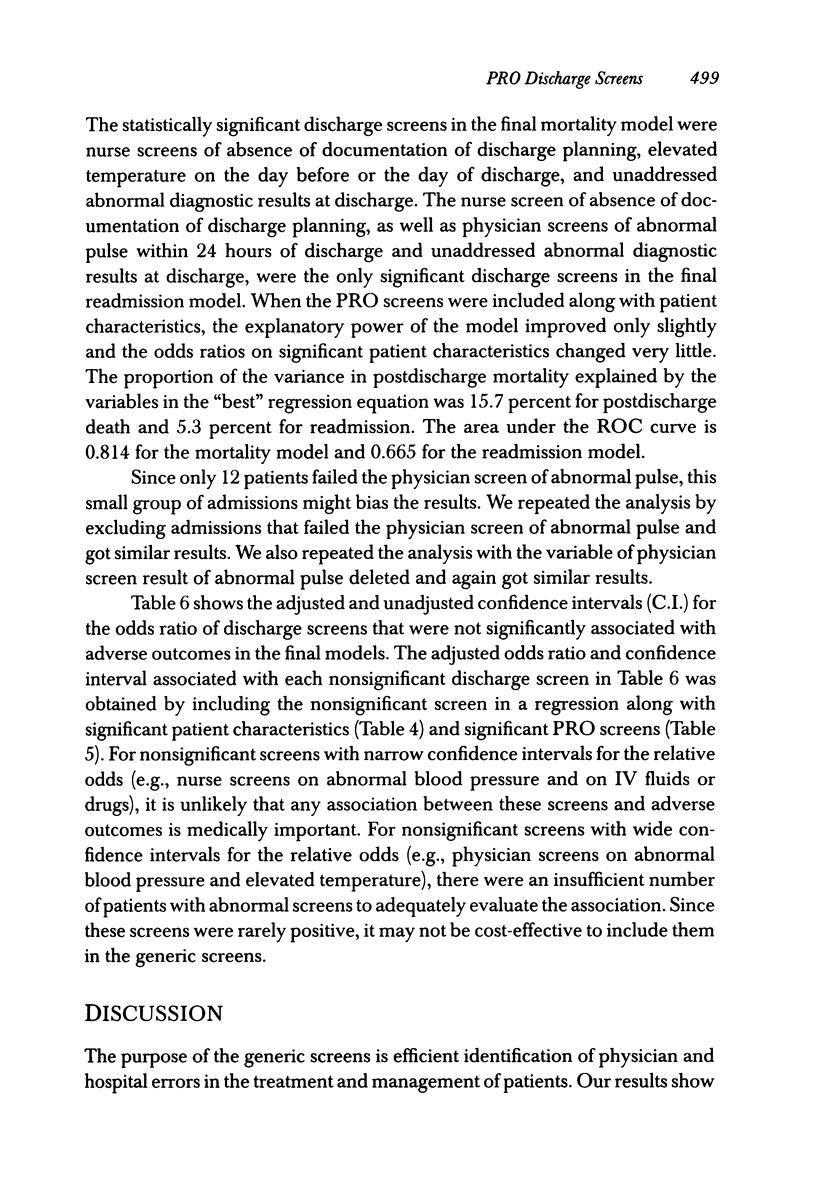
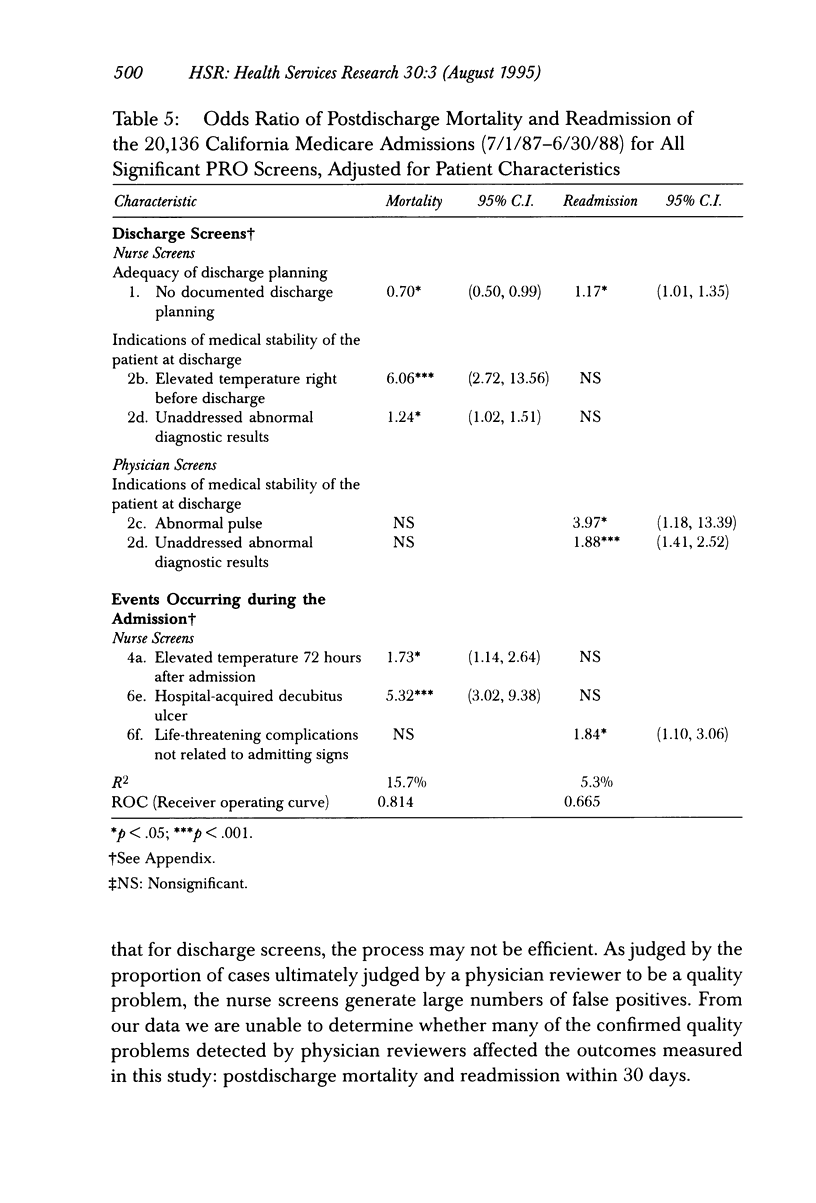
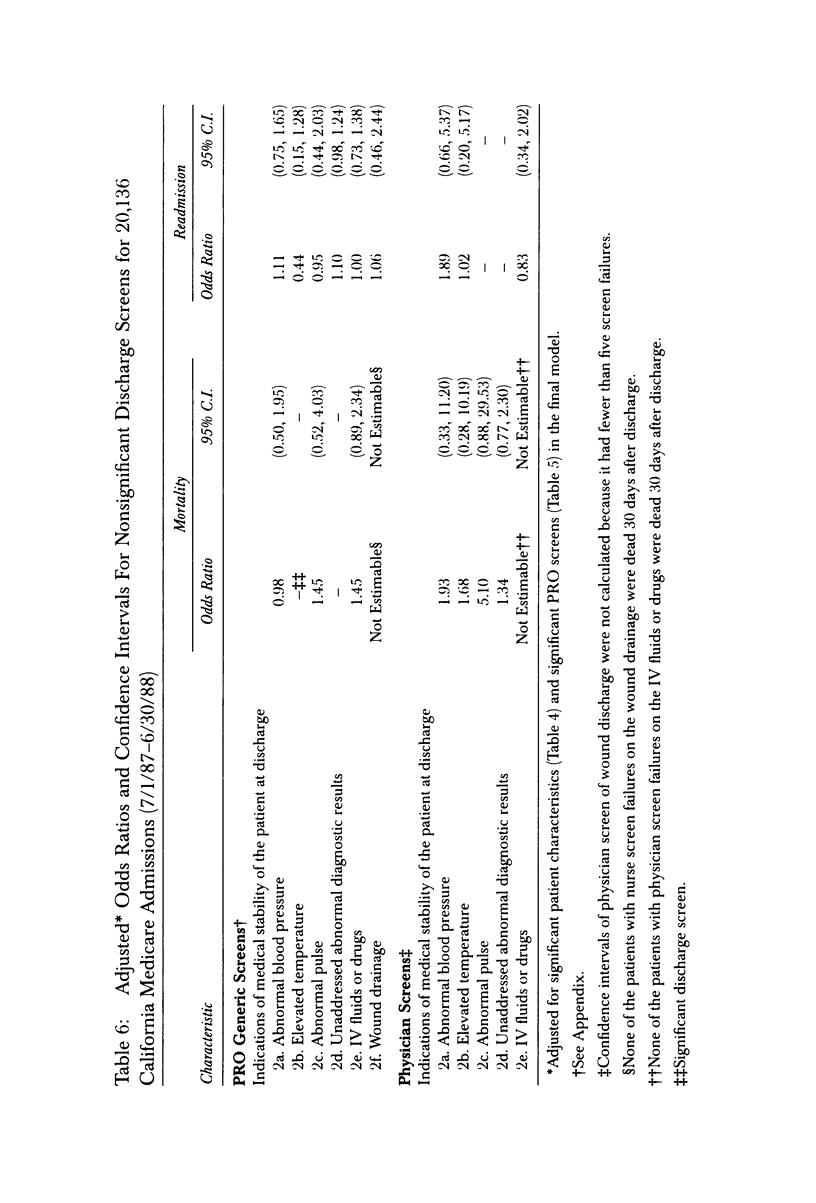
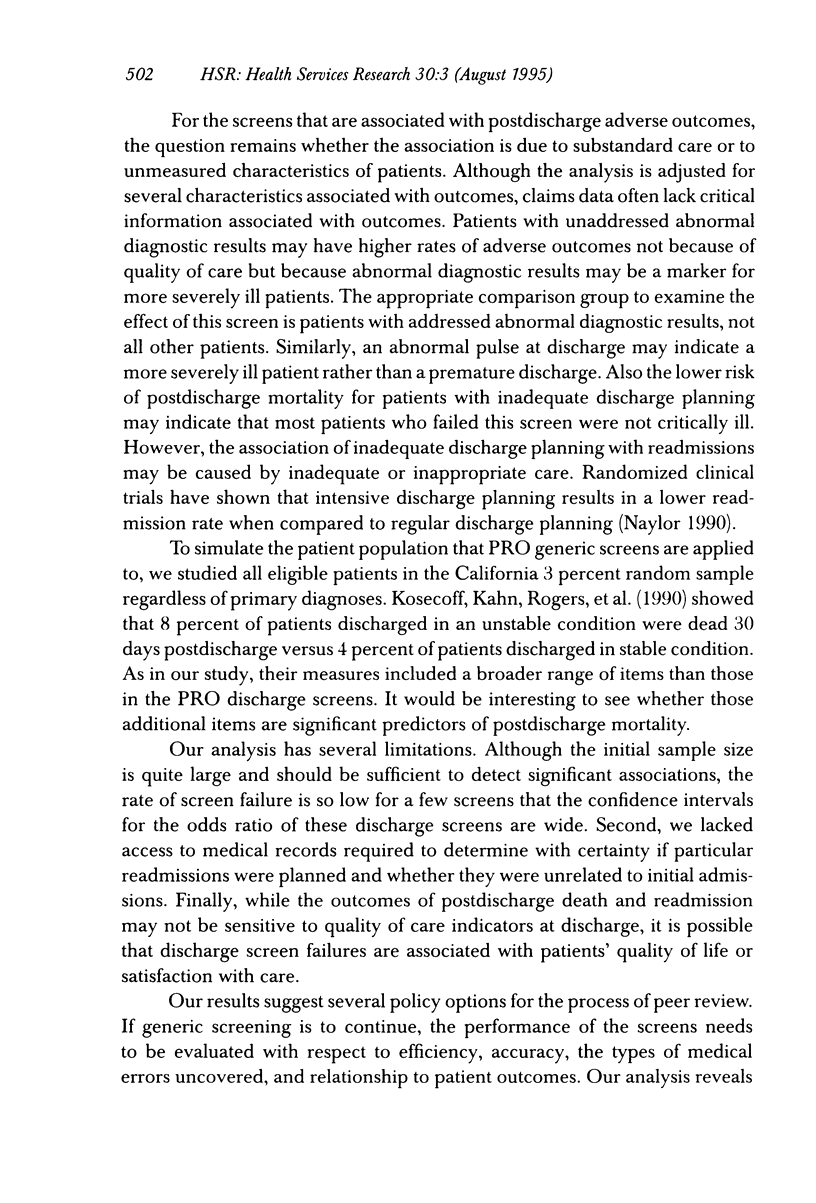
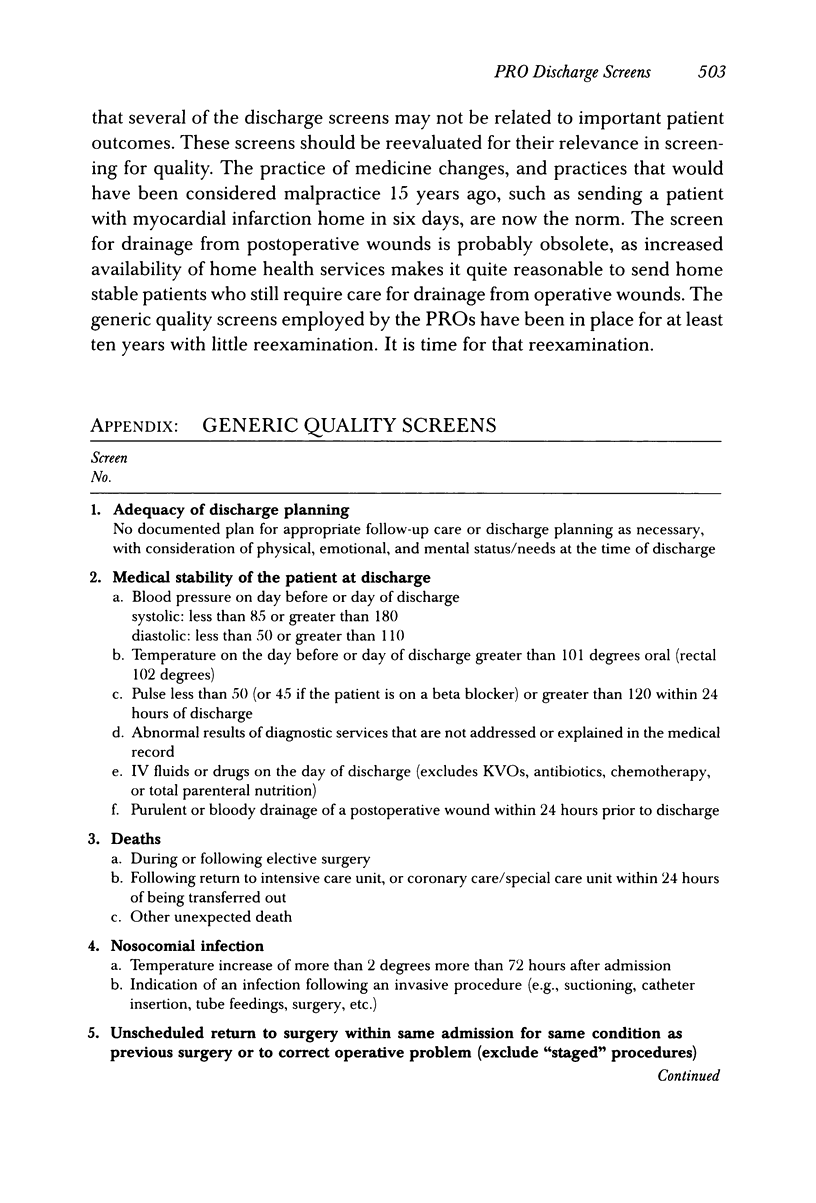
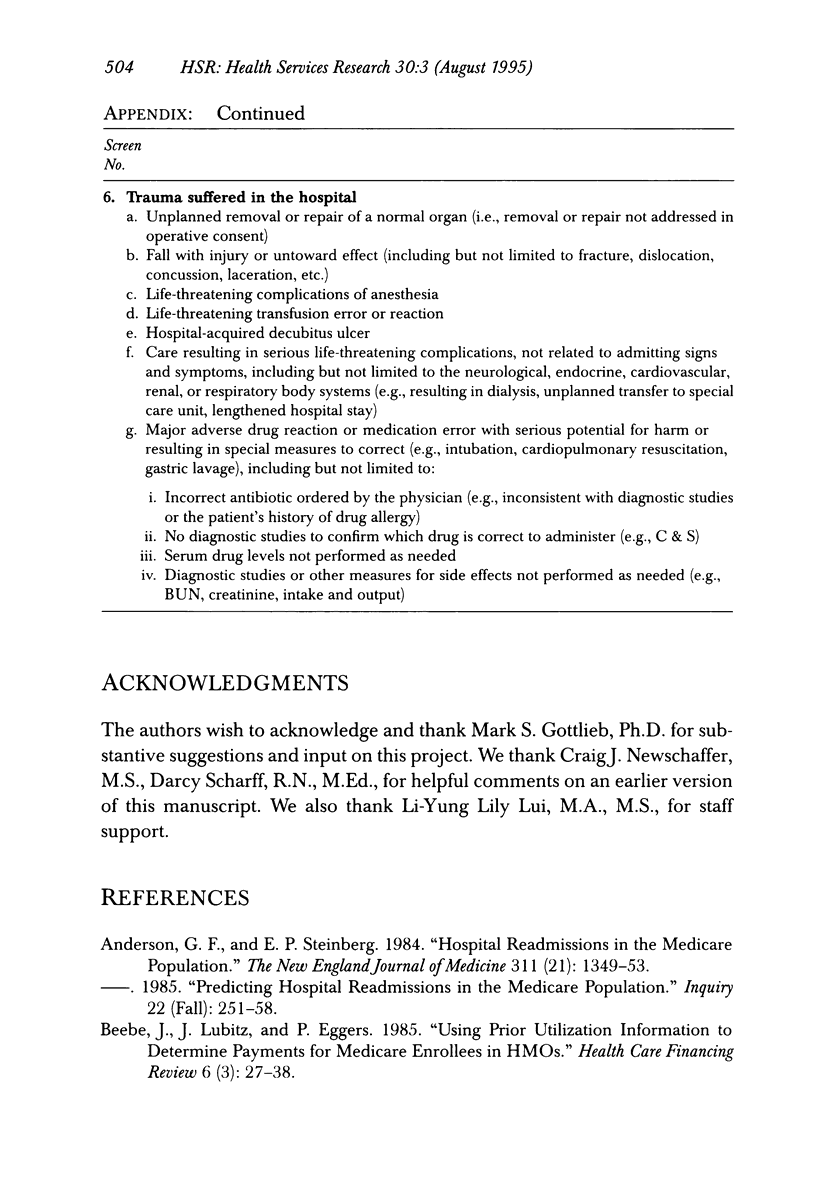
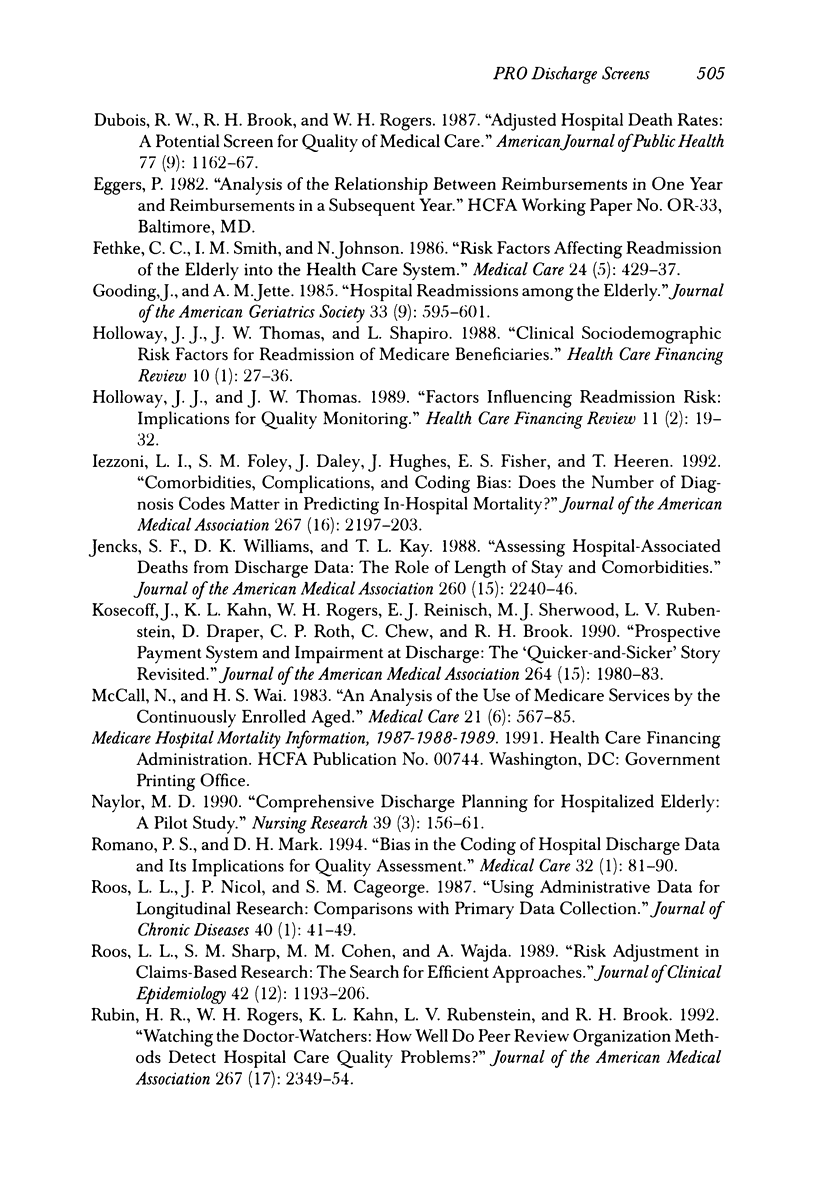
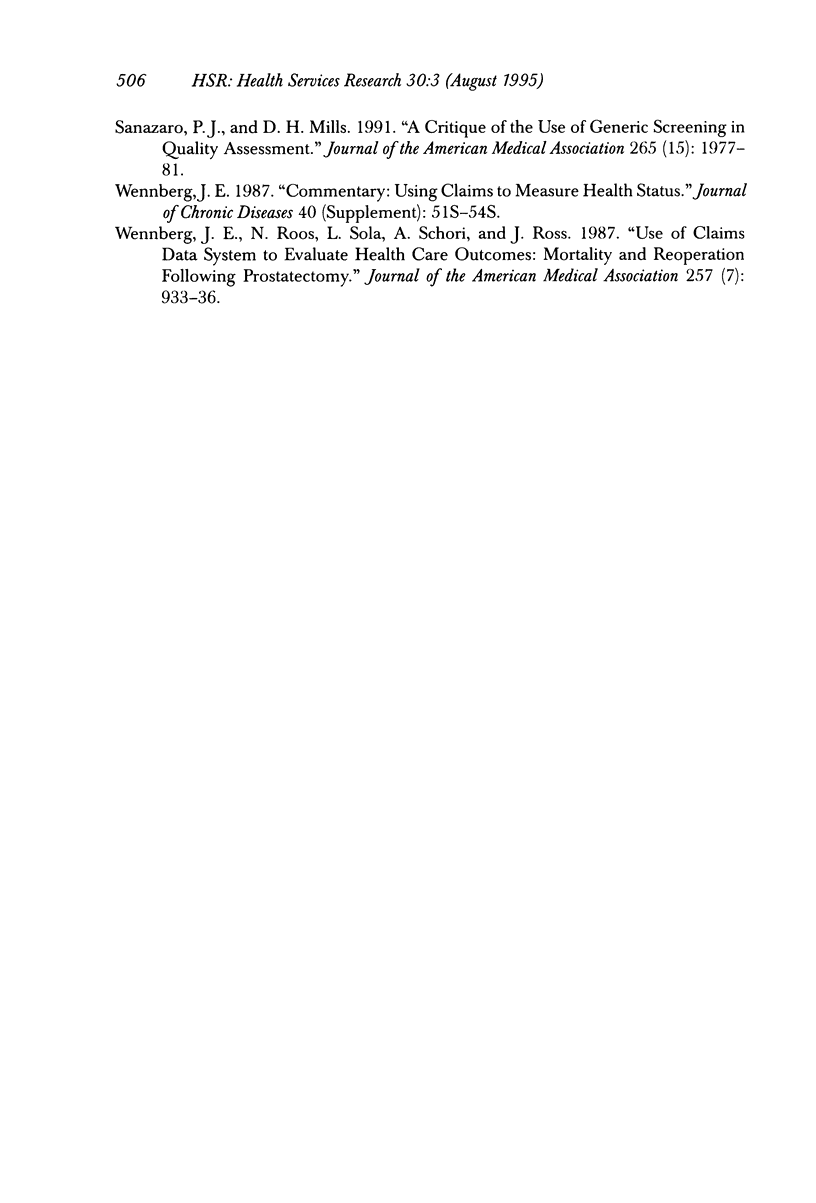
Selected References
These references are in PubMed. This may not be the complete list of references from this article.
- Anderson G. F., Steinberg E. P. Hospital readmissions in the Medicare population. N Engl J Med. 1984 Nov 22;311(21):1349–1353. doi: 10.1056/NEJM198411223112105. [DOI] [PubMed] [Google Scholar]
- Beebe J., Lubitz J., Eggers P. Using prior utilization to determine payments for Medicare enrollees in health maintenance organizations. Health Care Financ Rev. 1985 Spring;6(3):27–38. [PMC free article] [PubMed] [Google Scholar]
- Dubois R. W., Brook R. H., Rogers W. H. Adjusted hospital death rates: a potential screen for quality of medical care. Am J Public Health. 1987 Sep;77(9):1162–1166. doi: 10.2105/ajph.77.9.1162. [DOI] [PMC free article] [PubMed] [Google Scholar]
- Fethke C. C., Smith I. M., Johnson N. "Risk" factors affecting readmission of the elderly into the health care system. Med Care. 1986 May;24(5):429–437. doi: 10.1097/00005650-198605000-00006. [DOI] [PubMed] [Google Scholar]
- Gooding J., Jette A. M. Hospital readmissions among the elderly. J Am Geriatr Soc. 1985 Sep;33(9):595–601. doi: 10.1111/j.1532-5415.1985.tb06315.x. [DOI] [PubMed] [Google Scholar]
- Holloway J. J., Thomas J. W. Factors influencing readmission risk: implications for quality monitoring. Health Care Financ Rev. 1989 Winter;11(2):19–32. [PMC free article] [PubMed] [Google Scholar]
- Holloway J. J., Thomas J. W., Shapiro L. Clinical and sociodemographic risk factors for readmission of Medicare beneficiaries. Health Care Financ Rev. 1988 Fall;10(1):27–36. [PMC free article] [PubMed] [Google Scholar]
- Iezzoni L. I., Foley S. M., Daley J., Hughes J., Fisher E. S., Heeren T. Comorbidities, complications, and coding bias. Does the number of diagnosis codes matter in predicting in-hospital mortality? JAMA. 1992 Apr 22;267(16):2197–2203. doi: 10.1001/jama.267.16.2197. [DOI] [PubMed] [Google Scholar]
- Jencks S. F., Williams D. K., Kay T. L. Assessing hospital-associated deaths from discharge data. The role of length of stay and comorbidities. JAMA. 1988 Oct 21;260(15):2240–2246. [PubMed] [Google Scholar]
- Kosecoff J., Kahn K. L., Rogers W. H., Reinisch E. J., Sherwood M. J., Rubenstein L. V., Draper D., Roth C. P., Chew C., Brook R. H. Prospective payment system and impairment at discharge. The 'quicker-and-sicker' story revisited. JAMA. 1990 Oct 17;264(15):1980–1983. [PubMed] [Google Scholar]
- McCall N., Wai H. S. An analysis of the use of Medicare services by the continuously enrolled aged. Med Care. 1983 Jun;21(6):567–585. doi: 10.1097/00005650-198306000-00001. [DOI] [PubMed] [Google Scholar]
- Naylor M. D. Comprehensive discharge planning for hospitalized elderly: a pilot study. Nurs Res. 1990 May-Jun;39(3):156–161. [PubMed] [Google Scholar]
- Romano P. S., Mark D. H. Bias in the coding of hospital discharge data and its implications for quality assessment. Med Care. 1994 Jan;32(1):81–90. doi: 10.1097/00005650-199401000-00006. [DOI] [PubMed] [Google Scholar]
- Roos L. L., Jr, Nicol J. P., Cageorge S. M. Using administrative data for longitudinal research: comparisons with primary data collection. J Chronic Dis. 1987;40(1):41–49. doi: 10.1016/0021-9681(87)90095-6. [DOI] [PubMed] [Google Scholar]
- Roos L. L., Sharp S. M., Cohen M. M., Wajda A. Risk adjustment in claims-based research: the search for efficient approaches. J Clin Epidemiol. 1989;42(12):1193–1206. doi: 10.1016/0895-4356(89)90118-2. [DOI] [PubMed] [Google Scholar]
- Rubin H. R., Rogers W. H., Kahn K. L., Rubenstein L. V., Brook R. H. Watching the doctor-watchers. How well do peer review organization methods detect hospital care quality problems? JAMA. 1992 May 6;267(17):2349–2354. doi: 10.1001/jama.267.17.2349. [DOI] [PubMed] [Google Scholar]
- Sanazaro P. J., Mills D. H. A critique of the use of generic screening in quality assessment. JAMA. 1991 Apr 17;265(15):1977–1981. [PubMed] [Google Scholar]
- Wennberg J. E., Roos N., Sola L., Schori A., Jaffe R. Use of claims data systems to evaluate health care outcomes. Mortality and reoperation following prostatectomy. JAMA. 1987 Feb 20;257(7):933–936. [PubMed] [Google Scholar]


